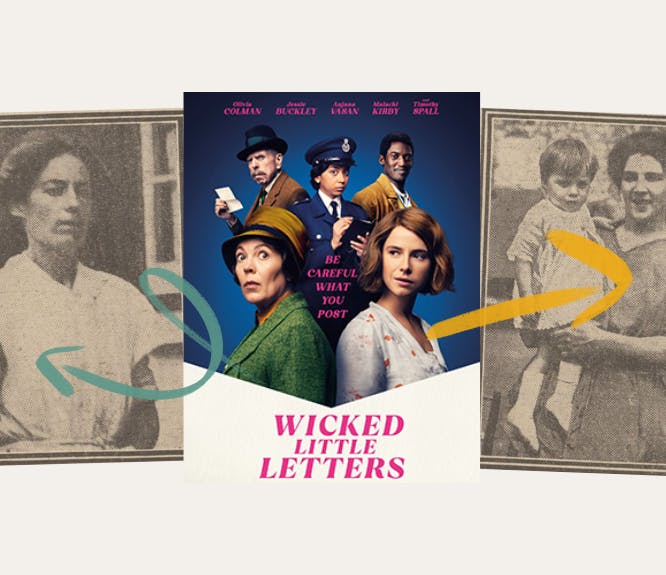Unlocking the Treasures of the Parish Chest
7-8 minute read
By The Findmypast Team | August 3, 2018
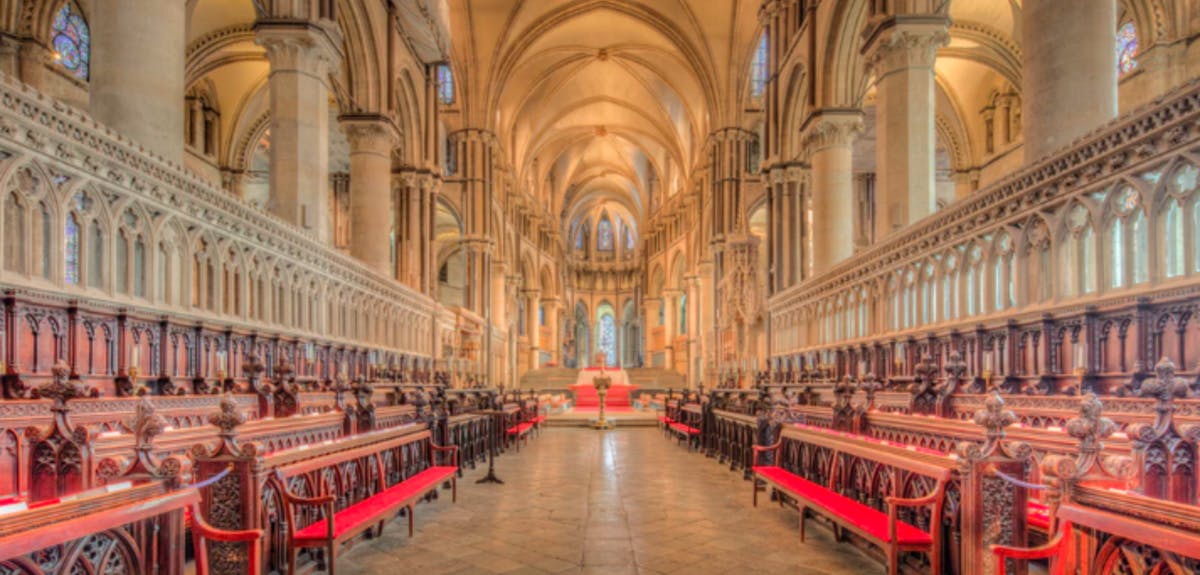
In this week's instalment of The Essential Guide to British and Irish Family History, we go beyond births, marriages and deaths and take a look at what else parish records have to offer.
Family historians with ancestry in England will almost certainly be familiar with Church of England parish registers. These registries of baptisms, marriages and burials provide the trunk on which most pre-1837 English family trees are built. Even after the 1837 implementation of civil registration, parish registers continued to be a significant source of useful genealogical information. What is less well-known, however, is that the Anglican parish created more than just baptism, marriage and burial registers in the management of their parish—these records are collectively known as "parish chest" records, after the chest they were typically preserved in. The parish chest was a strong wooden box wherein the parish registers, alms for the poor, and church silver were kept.1
All kinds of records have been found in parish chest records, but the most common fall into a few categories: settlement, illegitimacy, care of the poor, and care of the church, any of which could be useful in your family history research. Settlement laws were officially revoked in 1834 when the poor law unions were instituted, but mentions of the practice have been found even through 1876.
Settlement
Insight into the concept of a parish of settlement is foundational to understanding all other parish chest records. A parish of settlement was responsible for the care and keeping of paupers, widows, and orphaned children. Thus, if an individual became dependent on the state, it was expected their parish of settlement became responsible for them—even if they had moved elsewhere. An individual's parish of settlement was established one of eight ways:
Certificates: Settlement certificates were issued by the original parish of settlement giving the holder legal status within that parish and stating that they would accept the parishioner back in case of hardship or by the new parish of settlement. In the case of an original parish issuing a settlement certificate, the hope was that the individual could travel to find new work without the new parish immediately rejecting them as a resident—the new parish had the promise of the old parish to receive them back without argument. In the case of the new parish issuing a settlement certificate, it would be in the case of the individual meeting one of the eight criteria either with or without an examination.
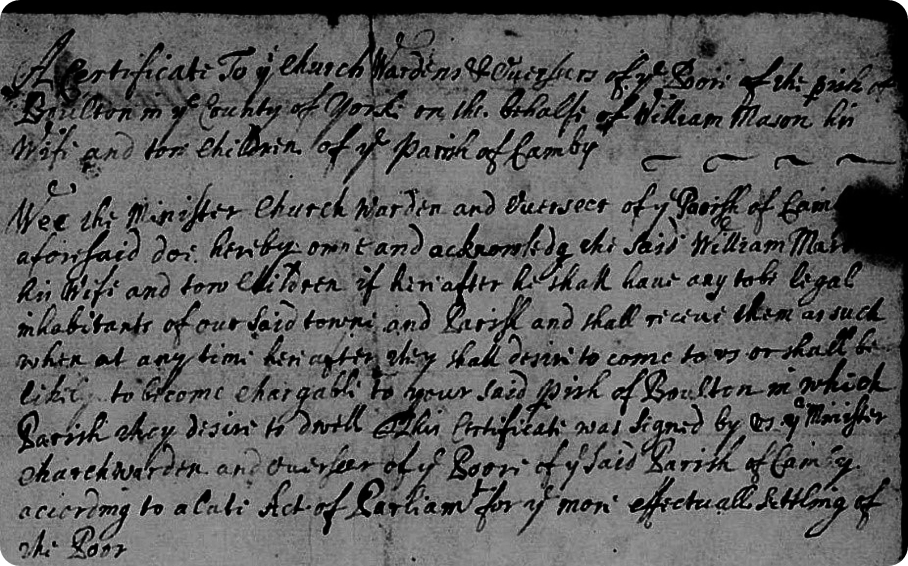
Certificate of Settlement
Examinations: If an individual became, or was likely to become dependent on the parish, and could not prove legal settlement, they could be, and frequently were, forcibly removed and transported back to their parish of settlement. When there was a question of settlement, an examination was held. Settlement examinations were conducted by the churchwarden and could take place at the request of the parish of current residence or the parish that was expected to receive the parishioner back—or both. Settlement examinations are goldmines of genealogical information and might include parents' names, place and date of birth, the reason for a claim of settlement, and the reason for a hardship. It is best to search for examinations in the parish chest records of both parishes since they might contain differing or additional information.
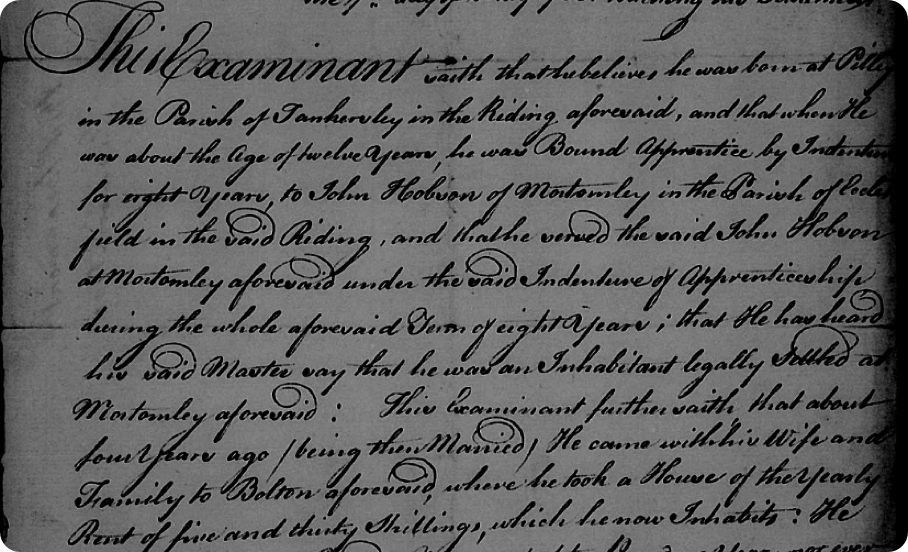
Settlement Examination where settlement was rejected.
Removal Orders: If an individual's parish of settlement was established as outside the parish of residence during an examination, a removal order was issued. The removal order was given to the parishioner who was escorted to the parish boundary and directed to return to their parish of settlement. Upon arrival the original parish might accept the parishioner back or might fight the removal order, leaving the parishioner in limbo until the matter was resolved.
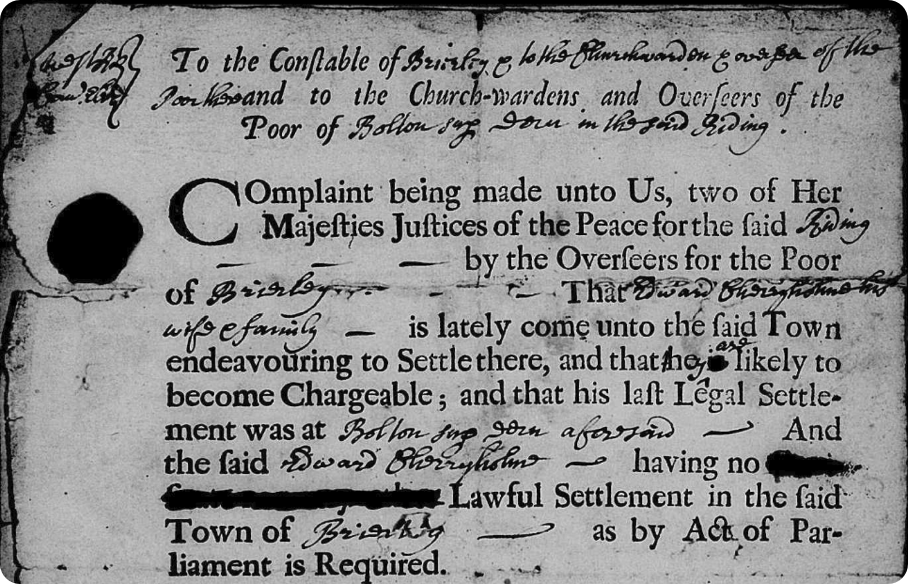
Removal Order
Illegitimacy
Illegitimacy can be one of the most challenging of genealogy's brick walls; however, an act of Parliament from 1732/3 stipulated the creating of records that provide some aid in obtaining fathers' names.
Examination: It was the responsibility of the pregnant mother to present herself before the overseer of the poor and name the father of her unborn child. Parishes were particularly aggressive in pursuing this if the woman and child were likely to become paupers and thus dependent on the parish. The examination usually names the father and might include information about the mother's parents and parish of settlement.
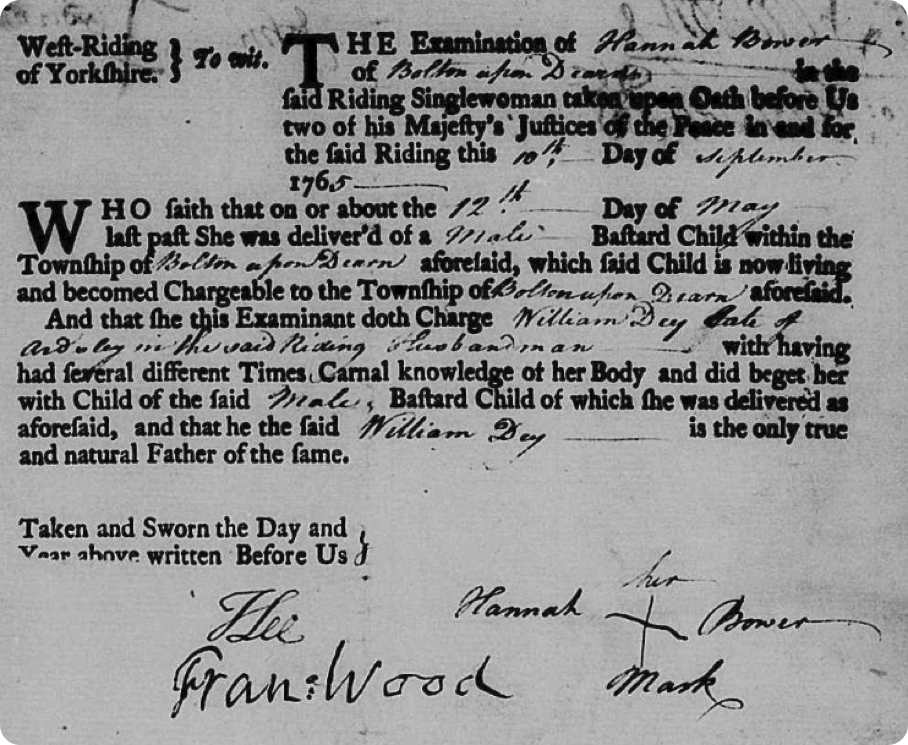
Examination
Summons: the alleged father would then be summoned to the quarter sessions or vestry to answer the allegation and provide assurance he would care for the child.
Bastardy Bond: a bastardy bond was a promise to the parish that the father would care for the child and the lying-in expenses of the mother.
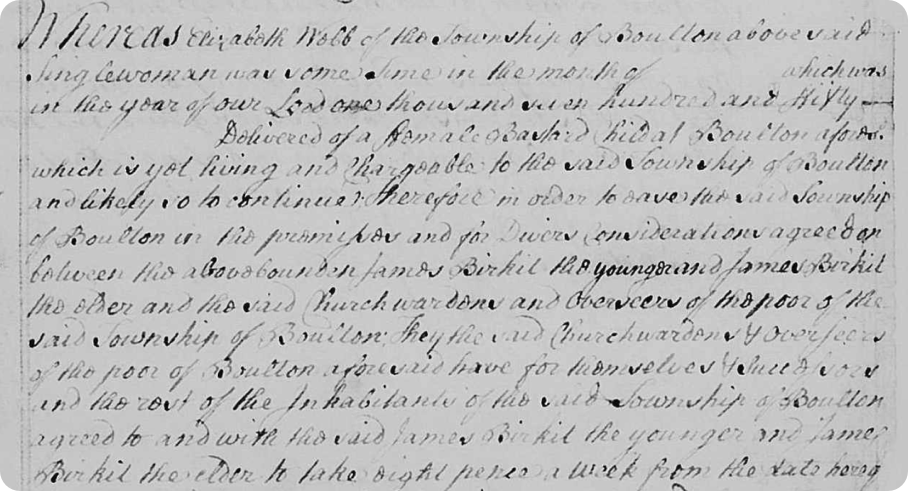
Bastardy Bond
Quarter Session Records: Even if the parish records created for an illegitimacy case no longer exist, the father and/or mother might have been questioned by the local Justice of the Peace and records might still exist naming the father in Quarter Session records—look for this subject in a future blog post.
Vestry Minutes
The church vestry were the male members who gathered to aid in decision making for the parish church. Local landholders generally dominated them. Vestry minutes are the minutes taken during the actual meeting and can contain a wide variety of material, including discussion of what care should be given to any particular poor parishioner, charities and their distribution, repairs to the church and churchyard, parish schools, pauper emigration, sanitation, and even local police. Many of these responsibilities were transferred to other authorities in 1834 with the creation of poor law unions.
Overseer's Accounts
Two vestry members were elected to act as overseers of the poor. The responsibility fell to these two men to determine what kind of care was needed. Most care was in the form of outdoor relief, or supplies/money given to the poor families to aid in their situation. Outdoor relief could include food, money, cloth/clothing, or even work for those who were able-bodied (e.g., women may have been employed by the parish as laundresses or nurses). Indoor relief was established for those who could not provide for themselves in any sense (e.g., children or the feeble). Those receiving indoor relief lived in workhouses or were bound out as apprentices. Sometimes overseer's accounts might name an illegitimate child's father's name when no other document does.
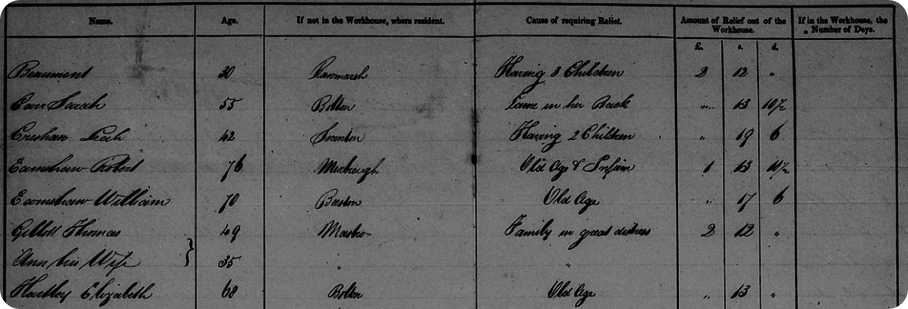
Disbursement to the poor showing reasons for relief and amount paid out.
Apprenticeship
Overseers of the poor retained the option to apprentice foundlings or pauper children to local tradesman or husbandman. The parents of the child had no say, and neither did the man to whom the child was apprenticed. If he did not want to take on the child as an apprentice, he could pay a fine for refusal. In some parishes, a pre-emptive payment was accepted to confer exemption.
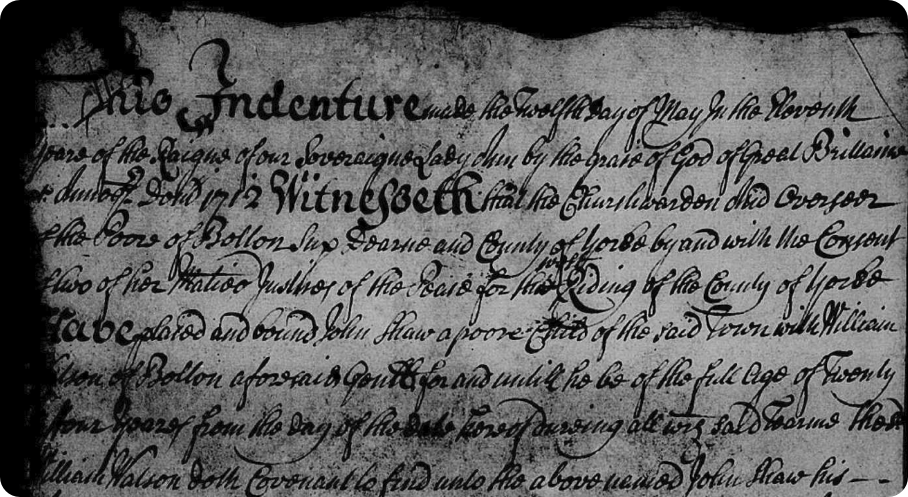
Apprenticeship Indenture between poor child John Shaw to William Watson until the age of 27.
Poor Rates
Poor rates were charged to parish householders and covered the care and keeping of the parish. Householders included all parish residents who were not paupers, including laborers, not just landowners. Poor rate collection lists can give researchers an idea of an ancestor's holdings, or lack thereof, as the rate was assessed based on the value of the property the individual owned or occupied.
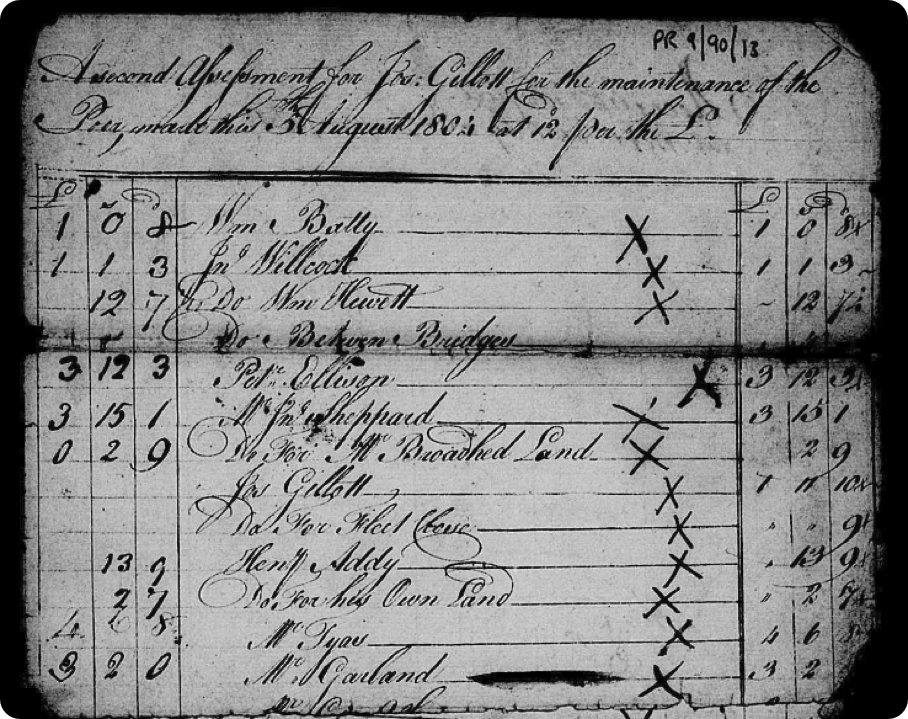
Poor rate assessment showing local householders.
Locating Parish Chest Records
The variation in what parish chest records have survived from parish to parish is staggering. Some parishes may have an almost complete set of record types, while others might have virtually nothing still extant—and every combination in between. When searching for parish chest records, keep an open mind and search multiple repositories. What is filmed vs. what is at the county records office will vary again from what might still be at the local parish church.In addition to the difficulties in locating the physical records, locating pertinent entries within the records can be difficult. Many of the records are spotty and unindexed, requiring a patient researcher with a strong knowledge of early English handwriting and practices. Check with the applicable county records office for available indexes, even if utilizing Family History Library microfilm.
FamilySearch/Family History Library
FamilySearch initially focused only on microfilming parish registers at the diocesan level—known as the Bishop's Transcripts. Later on, however, they returned to the county record offices and filmed the original parishes and some parish chest records. The number of parish chest records filmed for a particular parish will depend on the licensing agreements between the county and the LDS Church as well as what records were readily available at the time of filming. In the Family History Library Catalog, these records may be listed as "parish chest" records, or any of the types of records listed above. Just because something is cataloged as "vestry minutes" does not mean that is all the film includes.
County Record Offices
The most complete collection of parish chest records for a given county will be in the local county record office. While not all have been filmed by the LDS Church, virtually all have been placed at the local county record office.
London
London and the parishes that made up Greater London in neighboring Essex, Kent, and Surrey are generally found either at the London Metropolitan Archives, or Guildhall Library, though some have been filmed by the LDS Church. In addition, numerous smaller repositories within London still hold parish records. A careful review of the jurisdictions involved is necessary for locating parish records within London.While parish chest records are a fantastic source for genealogical research and should never be overlooked in tracing a difficult family, they are also extremely difficult to obtain and analyze. Legacy Tree Genealogists has onsite specialists who can obtain and analyze these parish chest records in pursuit of your elusive ancestors.
------------------------------------------------------------------------------------------------------------------------

Legacy Tree Genealogists is the world's highest client-rated genealogy research firm. Founded in 2004, the company provides full-service genealogical research for clients worldwide, helping them discover their roots and personal history through records, narratives, and DNA. Based near the world's largest family history library in downtown Salt Lake City, Utah, Legacy Tree has developed a network of professional researchers and archives around the globe. More information is available at https://www.legacytree.com.
Related articles recommended for you
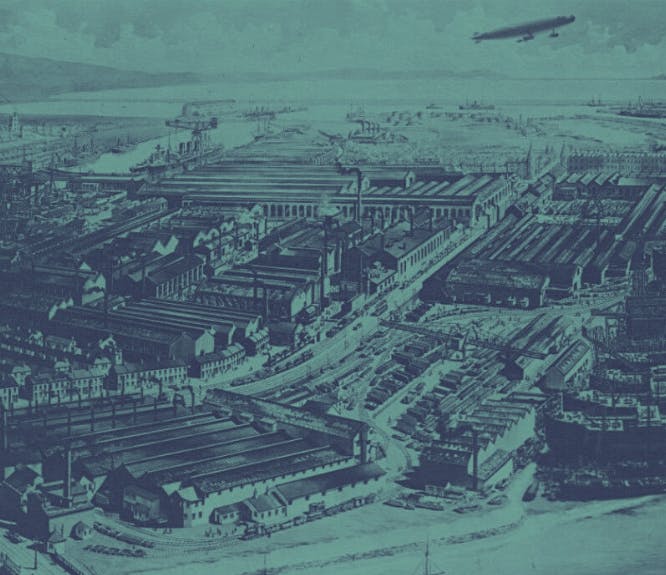
The history of the Barrow-in-Furness Shipyard
History Hub

'Their hunger will not allow them to continue': the victorious London dockers' strike of 1889
History Hub

Taylor Swift’s family tree shines with love, heartbreak and the triumph of the human spirit
Discoveries
